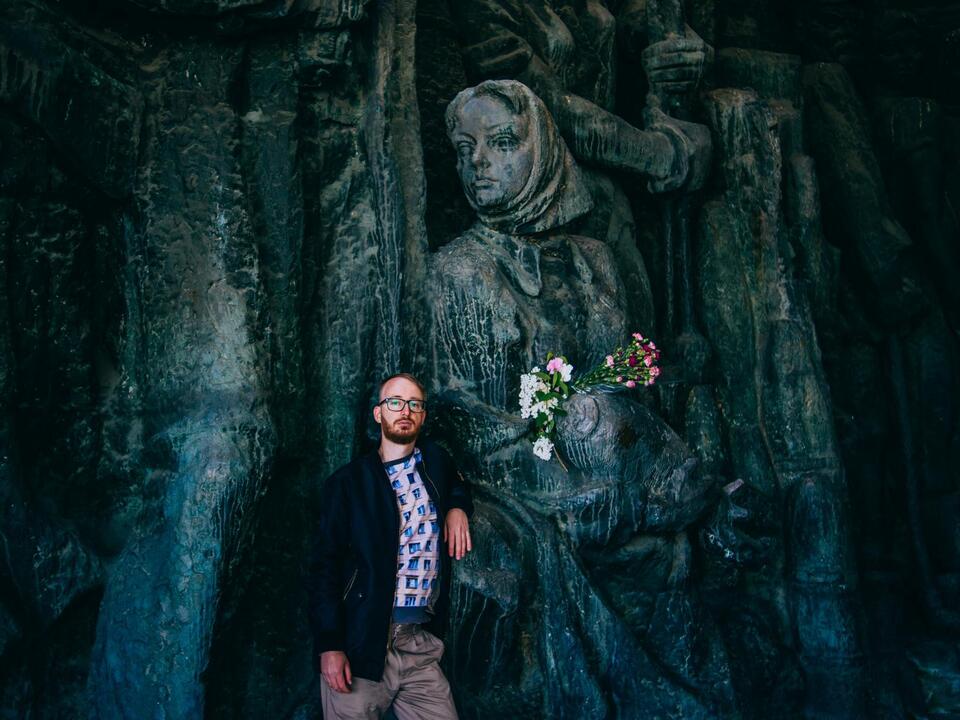Physical Address
304 North Cardinal St.
Dorchester Center, MA 02124
Physical Address
304 North Cardinal St.
Dorchester Center, MA 02124

As Russian bombs rain down on Ukraine, a young Ukrainian activist is focusing on preserving a different kind of treasure: the modernist buildings and public art that define 20th-century Ukraine.
Almost a decade ago, in 2015, Ukraine enacted laws to remove monuments and street names that celebrated the nation’s communist past, sparing only designated heritage sites. However, Soviet modernism masterpieces now face threats from these well-meaning laws, complicated by unchecked development, corruption, and a lack of planning regulations, says architecture expert and photographer Dmytro Soloviov.
Soloviov highlights that many Ukrainians’ anger over the country’s Soviet history can obscure any appreciation for its modernist architectural legacy. He remarks, “Subtlety and nuance are completely missing from the debate about decommunisation generally. When it comes to Soviet Ukrainian heritage, it gets even messier. People really get blinded by misdirected fury.”
“Considering we are already in the midst of a brutal war that is inherently destructive, it’s completely unnecessary to add to that destruction,” he emphasized.
Soloviov, who is authoring a book titled “Ukrainian Modernism” to be published by UK publisher Fuel, also manages an Instagram account documenting both the celebration and the damage of Ukrainian 20th-century architecture and art. Among his posts are before-and-after shots showing damage to the Kherson Library’s intricate wooden interiors due to Russian shelling, and communist-era mosaics of sportspeople destroyed during a stadium refurbishment in Lviv.
In Kyiv, on a bright day, he highlighted the unique architectural aspects of Zhytniy Market, a landmark in the city center. Designed by Valentyn Shtolko and Olha Monina in 1980, the market boasts a remarkable concave concrete ceiling covering its vast market hall, where a few traders still sell meat, cheese, and vegetables. “It’s like a gothic church,” Soloviov noted, pointing to the expansive windows of the market’s upper floor featuring triangular metal motifs that mimic the shape of a horse chestnut leaf, a symbol of Kyiv. The exterior is adorned with reliefs depicting 1,500 years of Ukrainian trade routes.
Unfortunately, the building faces threats not just from missiles but also from possible redevelopment. Twice this year, the city council initiated and then halted an auction for the market’s lease amid concerns from its fans that ruthless developers might ruin its character and intact original features.
Ukrainian celebrity chef Yevhen Klopotenko is leading an effort to revive the market by attracting investors to make it a new tourist spot with local products and restaurants, similar to London’s Borough Market. A working group formed by city authorities plans to consult the public on the market’s future soon.
However, Soloviov is skeptical about Klopotenko’s approach, pointing out that community events at the market have involved painting parts of the internal walls in Ukraine’s national colors of blue and yellow, which he believes contrasts with the architect’s vision. “Do what you want if it’s not dissonant, but don’t make a travelling circus out of it,” he asserted.
In the western Kyiv district of Vidradnyi, Soloviov pointed to 1960s housing blocks adorned with massive mosaics by artists Ivan Apollonov, Oleksandr Dolotin, and Valery Karas. Sadly, all but one of these artworks are severely damaged. Where a hedgehog once stood among a scene of animals, ceramics production, and music-making, there’s now a blank space. The primary culprit, according to Soloviov, is residents installing external insulation without any legal safeguards to protect the mosaics. “It’s a lack of regulation, and education, and cultural awareness,” he said, describing it as a form of “casual decommunisation” often detached from political motives.
At the intersection of architecture, design, and politics stands the Museum of the History of Ukraine in the Second World War, previously named the Museum of the Great Patriotic War. Some believe the museum’s narrative is tainted by Soviet ideology, exacerbated by Vladimir Putin’s use of the Second World War as a propaganda tool, which further tarnishes it in some people’s eyes.
However, others view the monuments and sculptures across the museum’s 10-hectare grounds as critical parts of Ukraine’s history, honoring its role in the defeat of Nazi Germany. The most iconic is the “Motherland” statue that towers 62 meters above the city. Last year, the hammer and sickle on the female figure’s shield were replaced by a trident, Ukraine’s national emblem.
Soloviov is among those concerned that the long-term plan might involve removing the complex’s sculptures and displays. He argues that it’s absurd to view these historical artworks as “active” propaganda. “As far as I know, no one ever died of communism after leaving this place,” he noted.
The museum’s director, Yurii Savchuk, echoed the need for balance. “We need to find a way to develop a museum for the Ukrainian people and for our state, especially during this dark time in our history.” He mentioned that the future vision for the museum could incorporate the role of the allies rather than focusing solely on the USSR’s part in the Second World War.
However, Savchuk added, “It’s not a good time to discuss this when during the night the Russians are bombarding our homes. We don’t have much opportunity to think about these things – but some people want to use the situation against our sense of solidarity. This place can be a weapon in politics.”
Source: The Guardian



